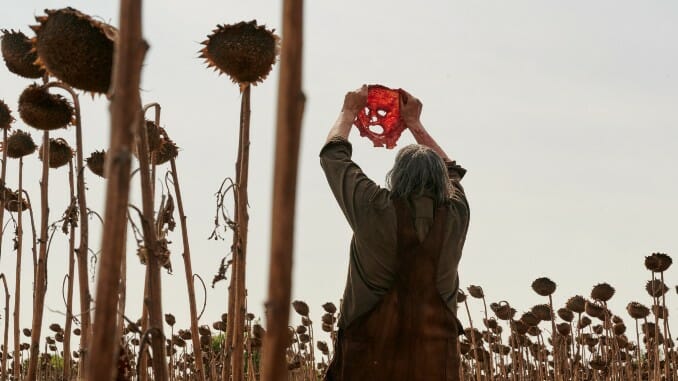The Texas Chain Saw Massacre Franchise Still Isn’t, Nine Movies In

The new Texas Chainsaw Massacre, debuting this weekend on Netflix, is the ninth entry in the Texas Chainsaw series, but it wants you to think of it as the second. Though the math is strange, the position is not unusual. As straight-up remakes have fallen out of favor and brand names are more coveted than ever, plenty of movie series have opted for legacy sequels that wipe away years or decades of dodgy continuity and/or artistic missteps, and bring it back to the beginning—not by remaking a beloved classic, but by sequelizing it directly. Hence, a Texas Chainsaw Massacre 2022 designed as akin to Halloween 2018: A sequel to the original horror classic, not any of those other lousy/confusing/divisive/obscure sequels/prequels/remakes that have appeared over the past however-many years. This is a particularly apt strategy for the Texas Chainsaw series, because it’s barely a series at all.
The Texas Chain Saw Massacre—the 1974 original about a group of counterculture types getting picked off at a remote farmhouse full of cannibals—was such a singularly grimy vision from director Tobe Hooper, from such a different era of filmmaking, that turning it into a serialized saga was never really on the table. This means that Texas Chainsaw ’22 isn’t clearing the decks of tangled continuity; it is, in fact the third movie to proceed, separately, as a direct sequel to the original, and the original only.
This, too, is not unheard-of: 20 years before Halloween ‘18, Halloween H20 tried the same trick, only to have David Gordon Green’s film reset even harder, ignoring not only H20 and its follow-up Halloween Resurrection, but Halloween II, the moderately well-regarded 1981 follow-up that was kept as canon for H20. This has resulted in a pile-up of movies that can lay claim to being Halloween III: The first, unrelated-to-Michael Myers version, subtitled Season of the Witch; H20, which follows Halloween II; and Halloween Kills, which is a sequel to the 2018 film, which makes it the third entry in that continuity.
But those movies have continuity, at least to some degree. The branching timelines of Texas Chainsaw are much more gnarled—even though, unlike Halloween, they include a sequel with the same director as the original. This doesn’t, however, mean that the original part two is a retread: The Texas Chainsaw Massacre 2, which trailed the original film by 12 years, offers a wild, gruesome and at times downright zany satire of ‘80s excesses (and sometimes itself). The movie often feels like a crazed carnival spookhouse version of its gritty, unsettling predecessor—like the type of sequel guys like Quentin Tarantino or Rob Zombie would prefer to the original.
Chainsaw 2 was obviously made to capitalize on the post-Halloween slasher craze, in the hopes that Leatherface, the silent and chainsaw-wielding centerpiece maniac from the first film, could join Michael, Freddy and Jason in the masked-killer pantheon. (He’s certainly got the creepiest mask, made out of human skin.) Even for a less-controlled sequel of 1986, however, Chainsaw 2 isn’t built to perpetuate endless sequels. When the family’s cannibalism has been mainstreamized into cookoff-winning chili, it seems possible that Hooper is poking fun at the notion of horror franchising.
Still, the notion that Leatherface and his rotating family of murderers represented a potential goldmine could not be dispelled. Subsequent sequels swerve away from Hooper’s crazier swings; they don’t explicitly ignore each other, but they make no particular effort to tie into anything but the first film. It’s worth noting that none of these sequels were hits—in fact, they all pretty much flopped, until the original was remade in 2003. After that remake got an underperforming prequel, the series lay dormant for a while—until 2013, when a decades-later legacy sequel called just Texas Chainsaw emerged.
-

-

-

-

-

-

-

-

-

-

-

-

-

-

-

-

-

-

-

-

-

-

-

-

-

-

-

-

-

-

-

-

-

-

-

-

-

-

-

-








































